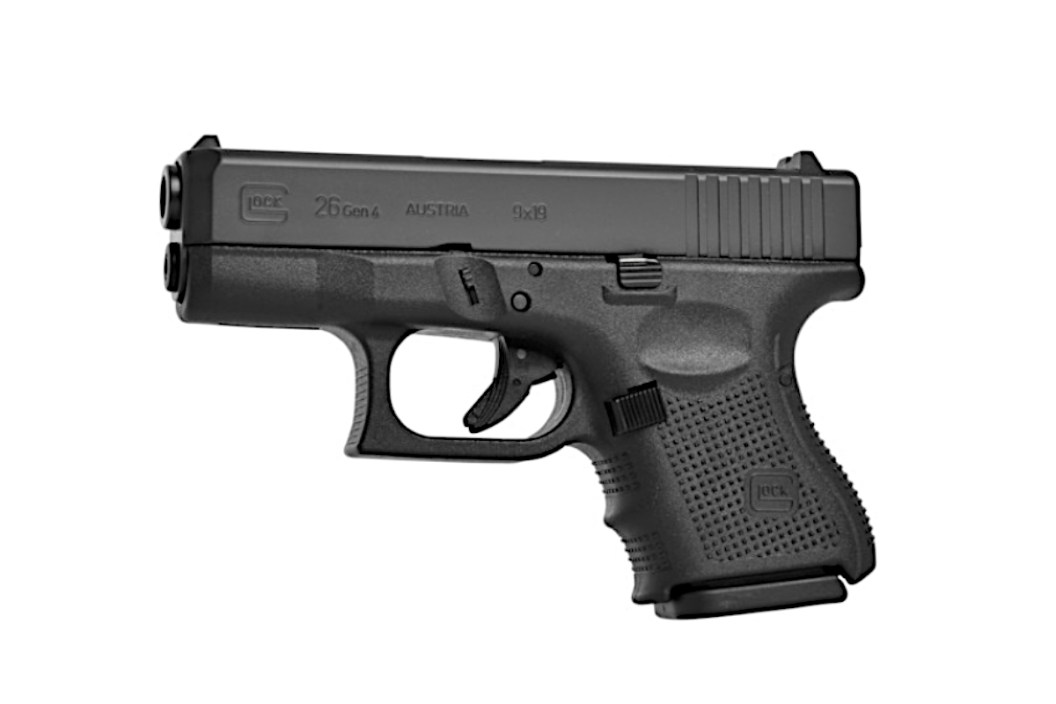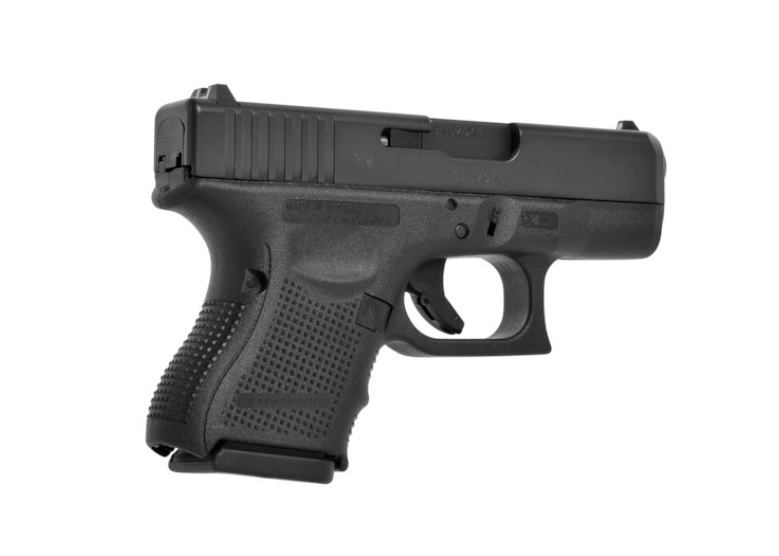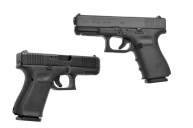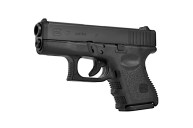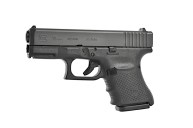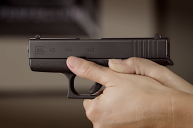The Glock 26 is a great firearm for self-defense.
In the world of concealed carry, the size and weight of your firearm are going to make a big difference in how comfortable you are keeping a firearm on your person all day. The smaller and lighter the gun, the better. It is why firearms like the slim and light Glock 26 have proven to be so popular for every day carry (EDC).
This polymer, subcompact, semi-automatic handgun is also extremely popular with gun owners because it offers a better magazine capacity in 9x19mm than many other small firearms like a snub nose revolver. It foes this without increasing the dimensions of the gun too significantly.
Today we will cover some of the Internet's most burning questions about this subcompact pistol and who should buy one and why. This is everything to know about the Glock 26.
What is the size of a Glock 26?
Before we go any further, let us break down some of the specs on this handgun, because these are important facts to know when considering a concealed carry pistol. The Glock 26 Gen 4 weighs approximately 25 ounces with a loaded magazine. This makes it about five ounces lighter than another popular 9mm Luger gun, the Glock 19.
The overall size of this firearm is much smaller and that shows with a barrel length of 3.43 inches and a slide length of 6.26 inches. This Glock pistol does have a super-slim profile thanks to the 1.26-inch slide and one-inch overall width. That makes the Glock G26 extremely comfortable for inside the waistband (IWB) carry while still offering excellent accessibility to the shooter should he or she need it.
We should mention that the newer Glock 26 Gen 5 model does weigh about one ounce more with a loaded magazine, and the slide is slightly wider. However, the specs are, for the most part, the same. You can expect the same Glock Marksman barrel, trigger guard, and the same type of trigger pull from a Gen 5 model. One big difference between the two models is that Glock put finger grooves on the Gen 4 models and removed them for the Gen 5s. It may require holding each one in your hands at the gun shop to determine which you like better because everyone is going to have a different opinion on this aspect. Glock did keep the same grip texture across both models. Another big difference is that the Gen 5 models have a more beveled edge at the front of the slide and an extra set of serrations to make racking the slide easier.
The biggest thing to be aware of with either version is the height. Both generations are 4.17 inches high, which gives this firearm a much shorter grip than something like the G19. The reason this is important is because some shooters may find the gun harder to grip and control. For many shooters, it takes some getting used to when your pinky fingers are not wrapped around the bottom of the grip. For this reason, shooters with smaller hands and women may find this firearm more comfortable than others.
Which is smaller Glock 26 or 43?
One cannot talk about the Glock 26 without mentioning the G43. Because when it comes to sleek and compact, the G43 beats out the 26 easily. The Glock 43 only weighs 20 ounces with a fully loaded magazine. The frame is slightly larger at 4.25 inches overall height and the slide width is narrower at 0.87 inches. The overall length of the G43 is also shorter, 6.26 inches compared to 6.43 inches. All around, the G43 is the more compact firearm.
Things get a little confusing because most people refer to the 26 as the "Baby Glock" even though it is not the lightest and most compact of Glock's offerings that use 9mm ammo. However, weight and size are not everything. There is a very good reason to consider the 26 over the 43, we will go over that next.
How many rounds can the Glock 26 hold?
The biggest reason Glock was able to reduce the size and weight of the Glock 43 was because they also reduced the capacity. The standard Glock 43 is a single stack that only holds six rounds standard. The standard for the Glock 26 is a 10-round magazine. Granted, you could go with the Glock 43X, which also holds 10 rounds, but for some people, the extra weight of the 26 is going to make this firearm more comfortable to control than the 43 models.
Keep in mind that you can also choose to feed the Glock 26 with magazines from the Glock 17, 19 to give this gun a boost in capacity. Some shooters like to keep a G26 magazine in the gun while they are carrying, but they also have a G17 or G19 magazine on their person as a backup. Remember that many experts say that most self-defense encounters are over in just a few shots. It really boils down to how much you think you may need those extra shots.
Since we are talking about ammo, we should mention that 9mm is considered a fine defensive round. You will always hear people complaining that the 9mm is under-powered for self-defense purposes, but that is something we simply do not believe. Just consider how many militaries and law enforcement officials have and continue to carry Glock 9mms as their primary service pistols. If 9mm is powerful enough for the pros, it is more than enough for the average person who just wants a little more peace of mind. If power is still a concern on your mind, consider something like the Glock 27 in .40 S&W instead.
Is the Glock 26 a good gun?
This is going to depend on who you ask, but you will likely find the overwhelming majority love this firearm. It is reliable, accurate, and extremely concealable. It fits easily into a purse, but can also be carried on a belt, in a pocket, or even in an ankle holster as a backup. Add in the adjustable backstraps to adjust the fit and the fact that the G26 is fully ambidextrous thanks to a reversible magazine catch. There is a lot of versatility here that is hard to beat.
There are some things about this firearm that make take some getting used to. For one, Glock triggers are notoriously mushy. Most people either love them or hate them. One can never truly know how they feel until they feel one break for themselves. There are aftermarket options out there to give these guns crisper triggers if that is your only sticking point on them.
Another thing we should mention is the lack of a manual safety. Glocks operate off what the company calls a "safe action" system. There is an internal firing pin safety, a drop safety, and a trigger safety. The system does make the gun safe, but trigger discipline is a must. When choosing a holster, there can be no compromises, it must cover the trigger guard completely.
The plus side to the safe action system is that once a round is in the chamber, it is ready to go. Many self-defense instructors prefer this style. Mostly because in the heat and stress of a self-defense encounter, all one must do is point and shoot. No fumbling around with the manual safety because seconds count in these types of situations.
When it comes to highly concealable, reliable concealed carry guns, the Glock 26 is one of the best in the game and one worthy of consideration for your next firearms purchase.
For more outdoor content from Travis Smola, be sure to follow him on Twitter and check out his Geocaching and Outdoors with Travis YouTube channels.
NEXT: THE 5 BEST HOME DEFENSE SHOTGUNS
WATCH
